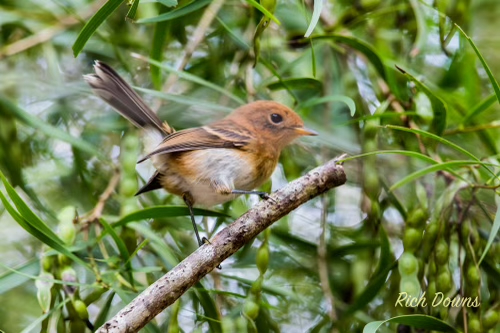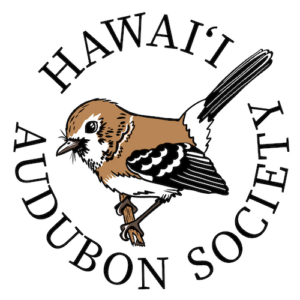
The history of the ‘elepaio as our emblem
Hawaiʻi Audubon Society published this article in issue 1.2 of the Elepaio Journal in January, 1940. While this little bird was once a common sight in our forests, it is now threatened on Oʻahu, and vulnerable on Kauaʻi and Hawaiʻi island.
Listen to calls and see more photos of this charismatic bird on eBird.
For more information about the history of birds and birding in Hawaiʻi, you can browse our extensive archive of past issues, dating back to 1939.

The Elepaio By J.d’Arcy Northwood
This is the little bird that was chosen by the Society as its emblem and whose likeness appears on our membership cards, so that it is fitting that it should be the subject of our first sketch of a Hawaiian bird. In contrast to all our other birds its friendly attitude marks it at once. Perhaps it would be more correctly called its inquisitive attitude but at any rate one has only to go a short way into the forest and soon one hears a scolding “chack-chack” or a whistled “whee-whee-o” a little brown bird is seen flitting nearer and nearer. It may pause to pick an insect off a leaf or to drop to the ground to capture some small creature but if one keeps still it may soon be only arm’s length away, fearlessly examining the intruders into its [quiet] haunts.
It is mostly brown, lighter below, with flecks of white on the wings. The tail is carried high, often at right angles to tho line of the back. The males have a black bib across the breast and the young birds are russet where the old one[s] are white. It belongs to the flycatcher family, yet its habits and appearance are more like those of a wren. It builds a deep compact nest closely woven of moss and fibers with lichens outside, usually in the slender twigs of an ohia or other forest tree, though sometimes it will nest quite low down. It lays two or three eggs whitish [in] color, thickly sprinkled with reddish brown dots.
Other species of Elepaio are found on Hawaii and Kauai, differing slightly from the Oahu bird but with very similar habits. It is not found on Maui, Molokai or Lanai.
It occupied a prominent place in the mythology of the Hawaiians. When a canoe was to be built the tree had first to be chosen and then felled. [B]efore the work proceeded further the kahuna watched the movements of the Elepaio as it examined the fallen trunk. If the bird began to peck it was a bad sign but if it called “Ono ka ia”, without pecking, the wood was sound. The late Charles Judd has pointed out that there is more than a grain of truth in this augury. If the wood were infested by insects the birds would naturally peck in search of food, while if there were no insects it would call “Elepai-o” and fly away.
Good luck to the Elepaio, it is heart warming to hear his cheery whistle and watch his [confident] approach on the forest trails.
Oʻahu ʻelepaio cover photo credit Rich Downs
